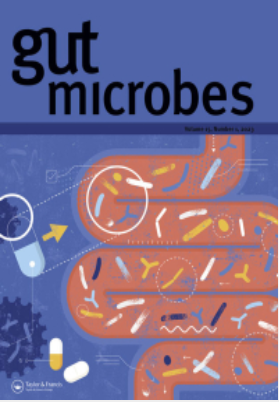Gut microbial metabolic signatures in diabetes mellitus and potential preventive and therapeutic applications.
IF 12.2
1区 医学
Q1 GASTROENTEROLOGY & HEPATOLOGY
引用次数: 0
Abstract
Diabetes mellitus can be subdivided into several categories based on origin and clinical characteristics. The most common forms of diabetes are type 1 (T1D), type 2 diabetes (T2D) and gestational diabetes mellitus (GDM). T1D and T2D are chronic diseases affecting around 537 million adults worldwide and it is projected that these numbers will increase by 12% over the next two decades, while GDM affects up to 30% of women during pregnancy, depending on diagnosis methods. These forms of diabetes have varied origins: T1D is an autoimmune disease, while T2D is commonly associated with, but not limited to, certain lifestyle patterns and GDM can result of a combination of genetic predisposition and pregnancy factors. Despite some pathogenic differences among these forms of diabetes, there are some common markers associated with their development. For instance, gut barrier impairment and inflammation associated with an unbalanced gut microbiota and their metabolites may be common factors in diabetes development and progression. Here, we summarize the microbial signatures that have been linked to diabetes, how they are connected to diet and, ultimately, the impact on metabolite profiles resulting from host-gut microbiota-diet interactions. Additionally, we summarize recent advances relating to promising preventive and therapeutic interventions focusing on the targeted modulation of the gut microbiota to alleviate T1D, T2D and GDM.糖尿病的肠道微生物代谢特征及潜在的预防和治疗应用。
糖尿病可根据起源和临床特征细分为几种类型。最常见的糖尿病是 1 型糖尿病(T1D)、2 型糖尿病(T2D)和妊娠糖尿病(GDM)。1 型糖尿病和 2 型糖尿病是影响全球约 5.37 亿成年人的慢性疾病,预计在未来 20 年内,这两个数字还将增加 12%,而妊娠糖尿病根据诊断方法的不同,影响高达 30% 的妊娠期妇女。这些形式的糖尿病有不同的起源:T1D 是一种自身免疫性疾病,而 T2D 通常与某些生活方式有关,但不仅限于此,GDM 则可能是遗传易感性和妊娠因素共同作用的结果。尽管这些形式的糖尿病在致病原因上存在一些差异,但它们的发病有一些共同的标志物。例如,与不平衡的肠道微生物群及其代谢产物相关的肠道屏障损伤和炎症可能是糖尿病发生和发展的共同因素。在此,我们总结了与糖尿病有关的微生物特征,它们与饮食的关系,以及宿主-肠道微生物群-饮食相互作用最终对代谢物谱的影响。此外,我们还总结了与有前景的预防和治疗干预措施有关的最新进展,这些干预措施侧重于有针对性地调节肠道微生物群,以缓解 T1D、T2D 和 GDM。
本文章由计算机程序翻译,如有差异,请以英文原文为准。
求助全文
约1分钟内获得全文
求助全文
来源期刊

Gut Microbes
Medicine-Microbiology (medical)
CiteScore
18.20
自引率
3.30%
发文量
196
审稿时长
10 weeks
期刊介绍:
The intestinal microbiota plays a crucial role in human physiology, influencing various aspects of health and disease such as nutrition, obesity, brain function, allergic responses, immunity, inflammatory bowel disease, irritable bowel syndrome, cancer development, cardiac disease, liver disease, and more.
Gut Microbes serves as a platform for showcasing and discussing state-of-the-art research related to the microorganisms present in the intestine. The journal emphasizes mechanistic and cause-and-effect studies. Additionally, it has a counterpart, Gut Microbes Reports, which places a greater focus on emerging topics and comparative and incremental studies.
 求助内容:
求助内容: 应助结果提醒方式:
应助结果提醒方式:


